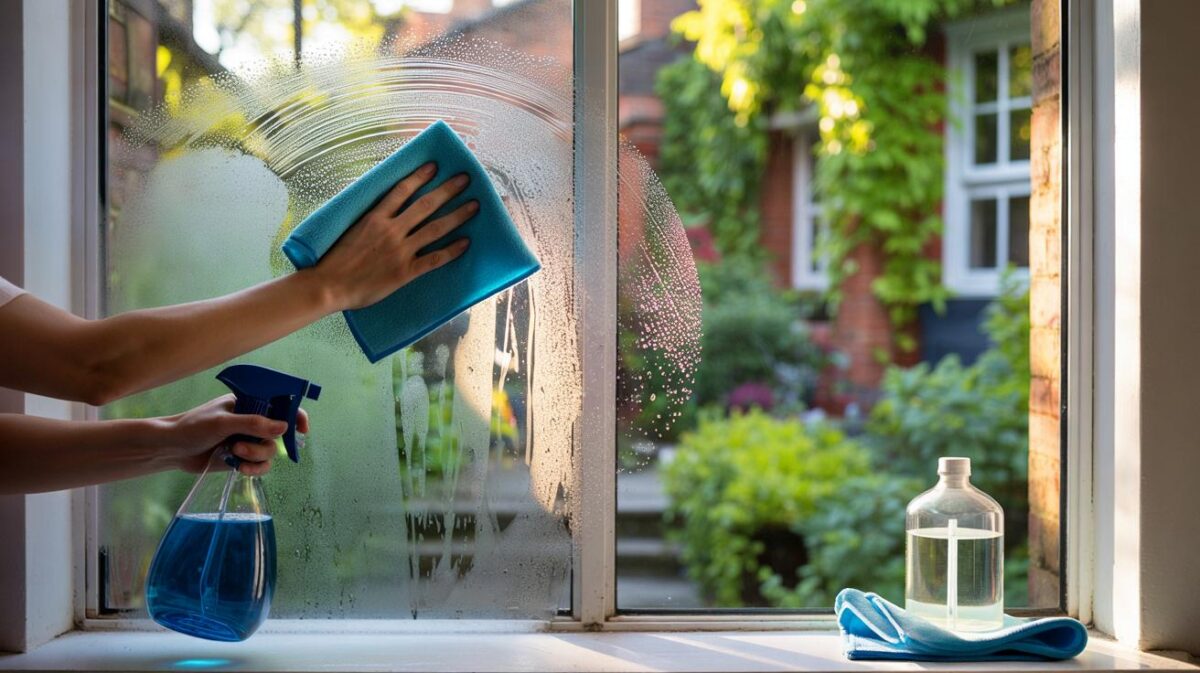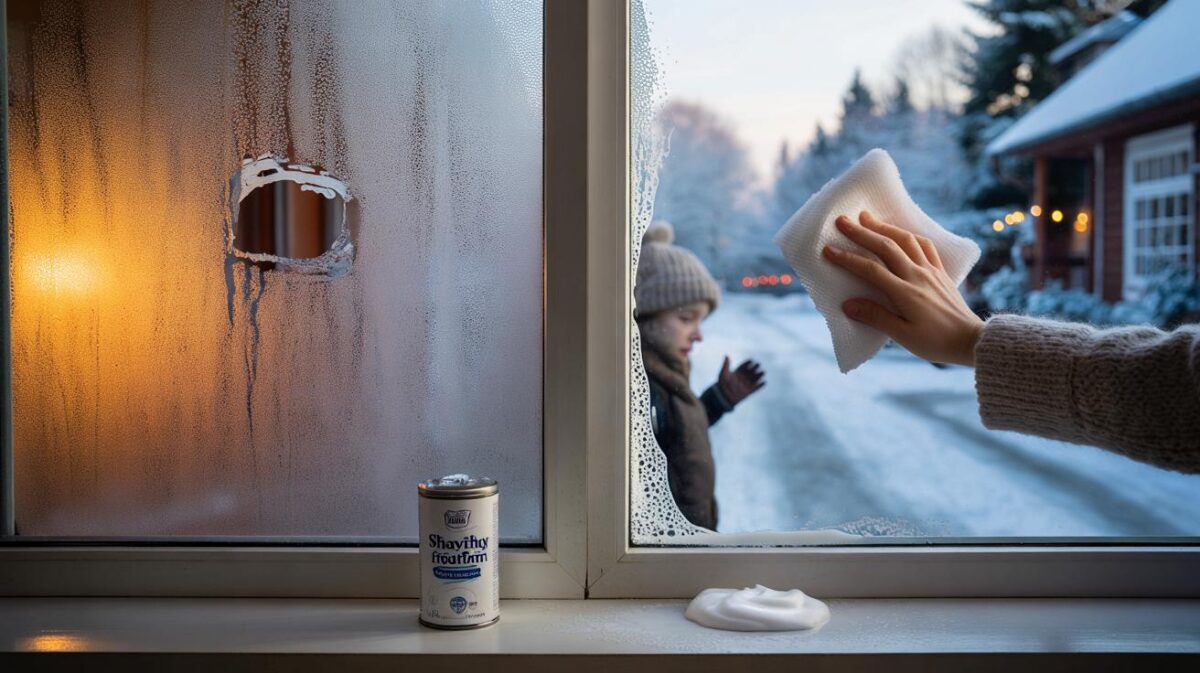It calms chaotic cupboards. It costs little. It works quietly.
Across small flats and busy family homes, a transparent over-door shoe organiser is being repurposed for cleaning gear and pantry bits. The idea is simple. Use the vertical space behind a door, label everything, and stop bottles from tumbling every time you reach for a spray.
The household squeeze driving a revival
Rising rents and smaller floorplans leave little room for bulky storage. Shelves fill fast. Doors remain blank, even though they can carry light items safely. Post-war households knew this well. They relied on wall hooks, rails and over-door pockets to keep supplies tidy. That mindset is back, helped by cheap transparent organisers with 24 pockets and stick-on hooks.
Save around 40% of cupboard space by moving light items to a 24-pocket over-door organiser. Set-up takes about 20 minutes.
What you need
- One transparent over-door shoe organiser with 24 pockets (about £12–£15)
- Four reinforced adhesive hooks rated to 2.5 kg each
- Double-sided mounting tape, about 19 mm wide
- Moisture-resistant labels or a label maker
- Reusable 250 ml plastic bottles for decanting large containers
Low-cost alternative: a clear shower curtain with stitched pockets can stand in for the organiser. It is less rigid but holds light items well if secured evenly.
Step-by-step set-up
Prepare the door
Clean the rear face of the door with a degreaser. Dry fully for ten minutes. Mark positions for the hooks: 38 cm apart horizontally, about 1.80 m top to bottom. Press each hook for 30 seconds to lock the adhesive.
Hang and stabilise
Hang the organiser on the hooks. Add a strip of double-sided tape along the lower edge. This stops sway when the door moves and reduces rattling.
Stock and label
Group items by use. Place daily cleaning sprays in the top rows. Keep occasional or heavier pieces in the lower pockets. Limit each pocket to about 200 g. Decant bulk products into 250 ml bottles to control weight and reduce clutter. Label each pocket clearly: kitchen, bathroom, floors, glass, tools.
| Zone | Typical contents | Pocket notes |
|---|---|---|
| Top row | Multi-surface spray, glass cleaner, microfibre cloths | Most-used, easy reach |
| Middle rows | Bathroom cleaner, descaler, sponges | Keep balanced left to right |
| Lower rows | Floor wipes, bin liners, spare gloves | Best for light-sensitive or infrequent items |
Weight discipline matters: cap pockets at 200 g and share mass evenly to protect hinges and adhesives.
Techniques from tidy households
- Create theme zones: kitchen, bathroom, floors, laundry, tools. It cuts search time.
- Add small sachets of dry rice with a dash of essential oil. They tame harsh odours.
- Rotate supplies: oldest stock to the front, new to the back. It reduces waste from expired products.
- Shield light-sensitive liquids by keeping them in the lower rows or using semi-opaque bottles.
- Use child-safe locks on doors where chemicals are stored. Keep corrosive items out of reach.
- Record refill dates on labels. You’ll spot overbuying and sync bulk purchases with sales.
What changes after a week
Households report faster routines and fewer duplicate buys. You can see the last half-bottle of descaler before adding another to the basket. Shelves clear for bulky items such as paper towels or a mop head. The daily stress of falling bottles fades because the door carries the small stuff in separate pockets.
The 40% claim holds up in simple checks. Move 16 lightweight bottles and packs from two shelves into pockets. If each shelf is 60 cm wide by 25 cm deep, you free 0.30 square metres of shelf area. That usually equates to two-fifths of a standard cleaning cupboard. The benefit grows in narrow galley kitchens, where a single free shelf can hold a toaster, a stack of pans or meal-prep containers.
Clear shelves prevent double buying and speed up chores. Visibility is the quiet value driver of this set-up.
Costs, risks and how to avoid pitfalls
Adhesive hooks can fail on dusty paint or cold surfaces. Clean well and press firmly. If you rent, choose removable strips and test on a hidden patch first. Some fire doors and heavy solid-core doors are not suitable; check door weight and hinge condition. Add felt dots where the organiser might touch the frame to reduce scuffs.
Mind the thickness. Measure door clearance at the hinge side. Two centimetres of added bulk can catch on seals. Keep bulky items to the centre pockets to avoid fouling the frame. Avoid strong acids, bleach tablets or solvents in upper rows. Spills at head height can cause injury or surface damage.
Quick maintenance plan: inspect quarterly, wipe residues, replace tired hooks, and refresh labels as categories evolve.
Why this old idea fits today
Vertical storage adds capacity without new furniture, screws or drilling. Transparent pockets give instant stock control. Decanting to 250 ml reduces weight per pocket and prevents top-heavy doors. Labels reinforce habits, which keeps the system alive after the first burst of energy.
Beyond cleaning: more ways to use the pockets
Pantry: spice refills, clip-top bags, food wraps, and tea. Utility: tape, batteries, torches, and lightbulbs. Craft: glue sticks, pens, ribbons, and thread. Pet care: leads, treats, waste bags, and brushes. The key is consistent labelling and a firm rule on weight limits.
A five-minute audit to test your gain
- Count current items on shelves you plan to move.
- Measure shelf width and depth to estimate reclaimed surface area.
- Weigh a typical bottle to check pocket load stays under 200 g.
- Plan zones on paper before stocking the organiser.
- Take a photo before and after to track how much space you win.
Small upgrades that add polish
Swap paper labels for waterproof ones to survive spills. Use colour-coded dots for rooms: blue for bathroom, green for kitchen, yellow for floors. Add a narrow magnetic strip near the organiser for small metal tools like a bottle opener or mini screwdriver. Fit a door closer if slamming is common; it protects adhesives and lowers noise.
If you need to store heavier items
Keep dense products on a low, fixed shelf. Reserve pockets for cloths, wipes, gloves, and light spritzers. If you must hang extra weight, upgrade to screw-in cup hooks sunk into a timber batten across the door. Only attempt this on suitable doors you own, and avoid hollow panels that could crack.
Environmental and money angles
Decanting from bulk containers lowers plastic waste over the year. Better visibility means fewer impulse buys. A basic kit costs under £20 and often pays back within a month through avoided duplicates. When labels prompt rotation, you finish products before they expire, which saves both cash and cupboard space.








